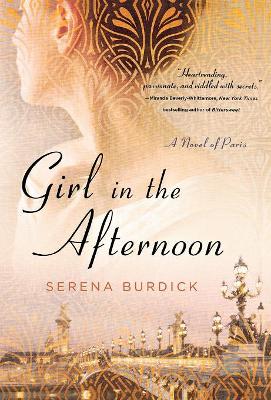Reviewed by Lianne on
Wow, this book. It’s a fairly slim outing for a historical fiction title but there’s never a dull moment reading it; I pretty much read this book in about two days, I had to find out what happened next for the Savarays. It’s a fairly atmospheric read; despite of the vibrancy of Paris and the sunny countryside that Aimee and others often walked along, I couldn’t help but feel the dreariness and tension (especially early in the book when Henri disappeared and during the tale end of te Fraco-Prussian war as well as when they set foot in England) as secrets come to life and the characters undergo varying degrees of misery and loneliness.
As I read, it became increasingly clear just how dysfunctional the Savarays were. For about a third of the book, I was very upset with Henri and the way he left (and then for the way he acted around Aimee when he reunited with her in Paris years later), but when the reason why he left was revealed, well, now, I would not have expected that at all, which goes back to the Savarays and their varying degrees of disappointment, lack of communication/affection returned, and failings rising up. Unrequited feelings take many forms here, and the Savarays are models of this. In all of this, I felt sorry for Aimee (and the children as well) as she was the one most affected by the actions of those closest to her and she more or less (in my opinion) got the shortest end of the stick in the end because she had her whole life ahead of her and so much was taken from her. The epilogue in a way was supposed to be hopeful in some sense, but I couldn’t help but find it rather chilling as the tragedy seemed circular here, each generation affected by what happened before.
Admittedly though it felt like the Impressionists angle takes a backseat to the Savarays’ story. Henri and Aimee are artists, and Aimee’s work in Paris and mingling with the art community brought the Impressionists into the story, but I felt like the importance of Aimee’s work and her connection to her work amidst the chaos of her personal life should’ve been more at the forefront; I felt this was only the case in a chapter or two during her time away from France. Édouard Manet has a role in events, but it wasn’t as big as I thought it would, nor did she mingle with other artists as often as I thought she would.
Overall I enjoyed reading Girl in the Afternoon: the family drama definitely kept me tuned in as was Henri’s secret for leaving (however irritated I was with the character for a while). While the art scene wasn’t as prevalent as I thought it would’ve been, incorporating more historical elements and figures from the period, it’s always lovely to read something set in mid- to late-19th century Paris. Readers of historical fiction may want to check out this title!
Reading updates
- Started reading
- 9 May, 2016: Finished reading
- 9 May, 2016: Reviewed
